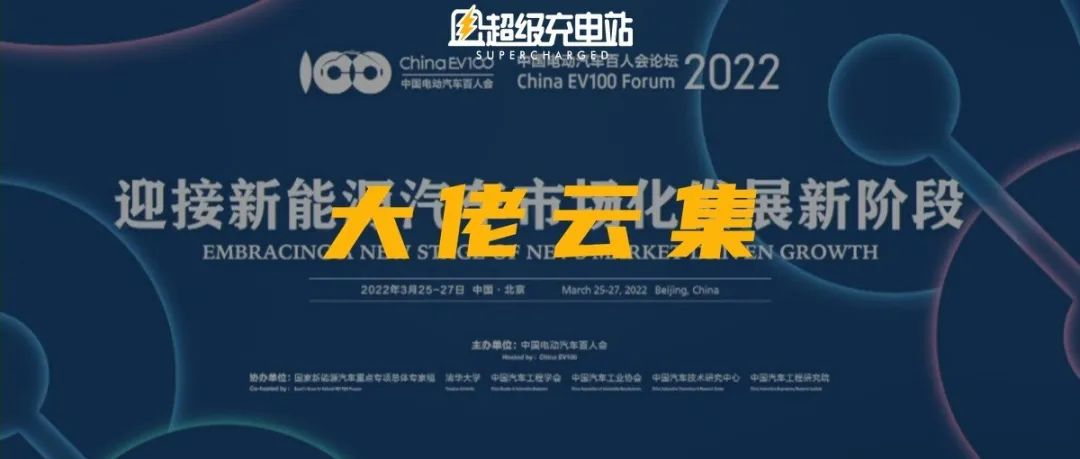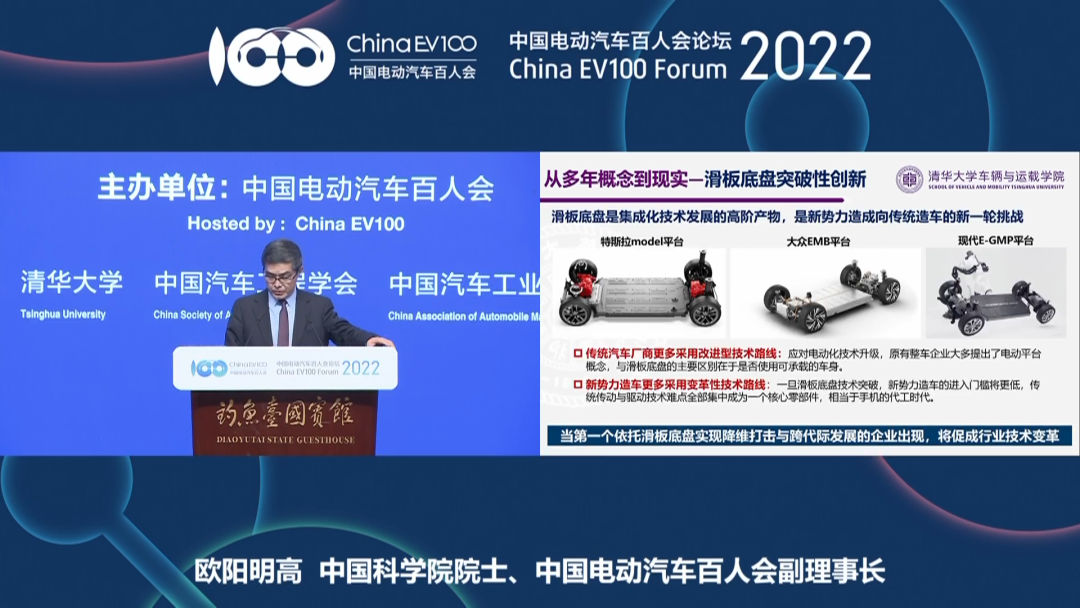Author: French fries fish
The most important event in the automotive industry this weekend must be the 2022 China Electric Vehicle (EV) Hundred Person Forum.
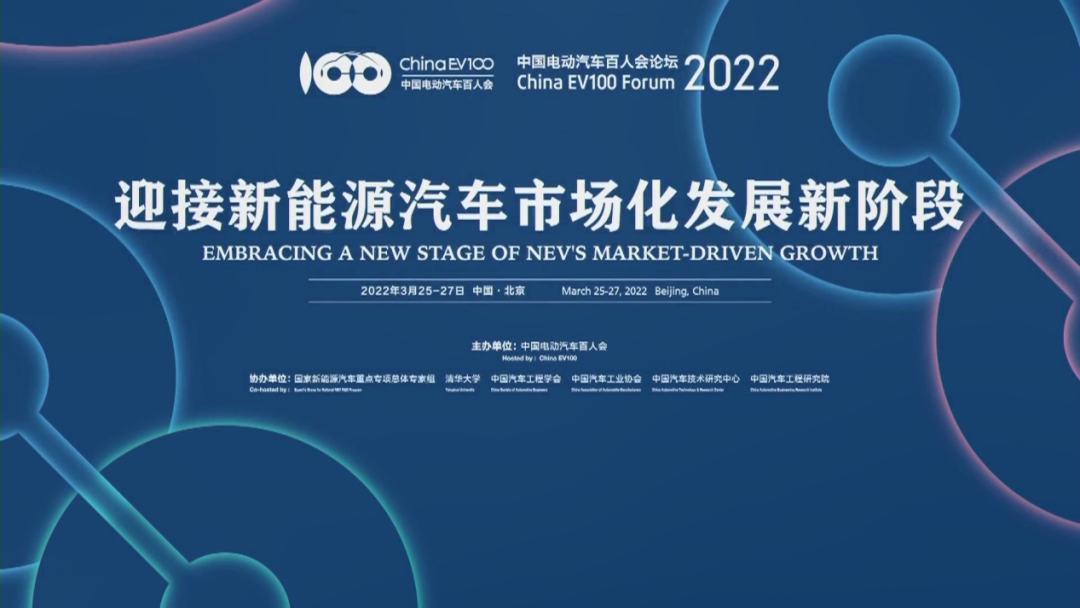
The China EV Hundred Person Forum, established on May 5th, 2014, is an interdisciplinary, inter-industry, inter-departmental, and non-official non-profit policy and academic research institution in the field of EVs in China. It is jointly initiated by officials, scholars, and entrepreneurs from government departments, research institutions, and the industry.
The theme of this forum is “Embracing a New Stage of Market-oriented Development of New Energy Vehicles.” Here are 20 summary statements:
Synergy of Dual Intelligence
“The key content of the synergy of dual intelligence includes four aspects: 1. Building intelligent urban infrastructure; 2. Building vehicle-city-network platforms; 3. Conducting multi-scenario demonstration applications; 4. Improving the standard system.”
—— Zhang Yongwei, Vice Chairman and Secretary-General of the China EV Hundred Person Forum.
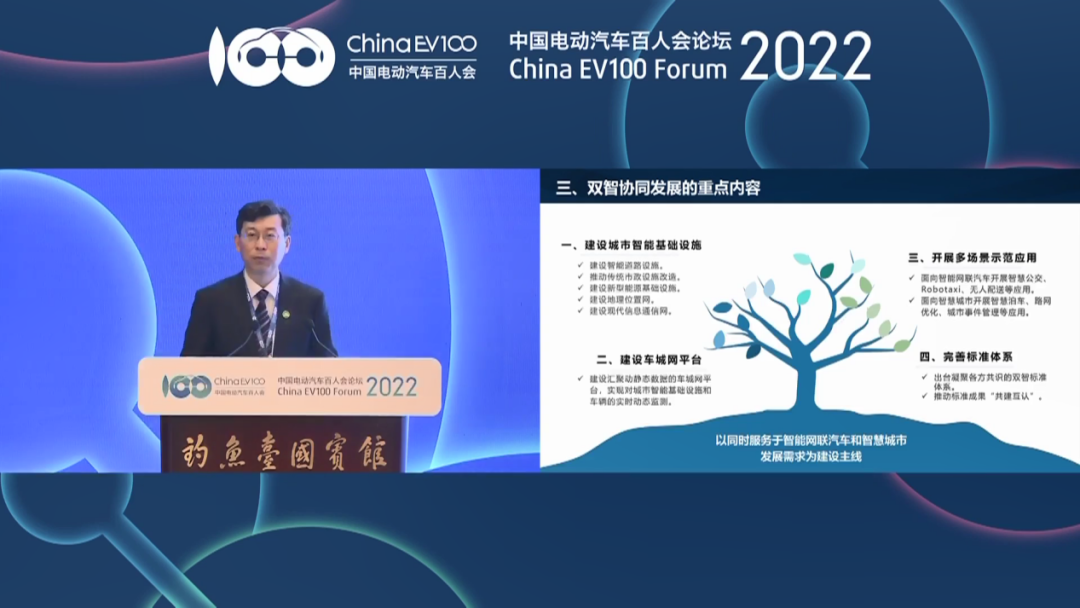
“Dual intelligence” is a major topic of this forum. The so-called synergy of dual intelligence refers to the coordinated development of intelligent urban infrastructure and intelligent interconnected vehicles.
In the era of 5G, the Internet of Everything, and EV as a tech-intensive product, networking has become one of its most basic functions. How to synergize and interact between smart cities and intelligent connected vehicles, make transportation more intelligent and travel easier, and make life better has become a national focus and has been written into the “14th Five-Year Plan.”
So, how to achieve this? Experts have proposed the four aspects mentioned above.
Charging Pile Planning
“Currently, the utilization rates of many charging piles, in terms of both charging time and overall quantity, are not high. It is suggested to increase the proportion of direct current fast charging facilities in charging pile construction.”
—— Wang Kai, Dean of the China Academy of Urban Planning and Design.
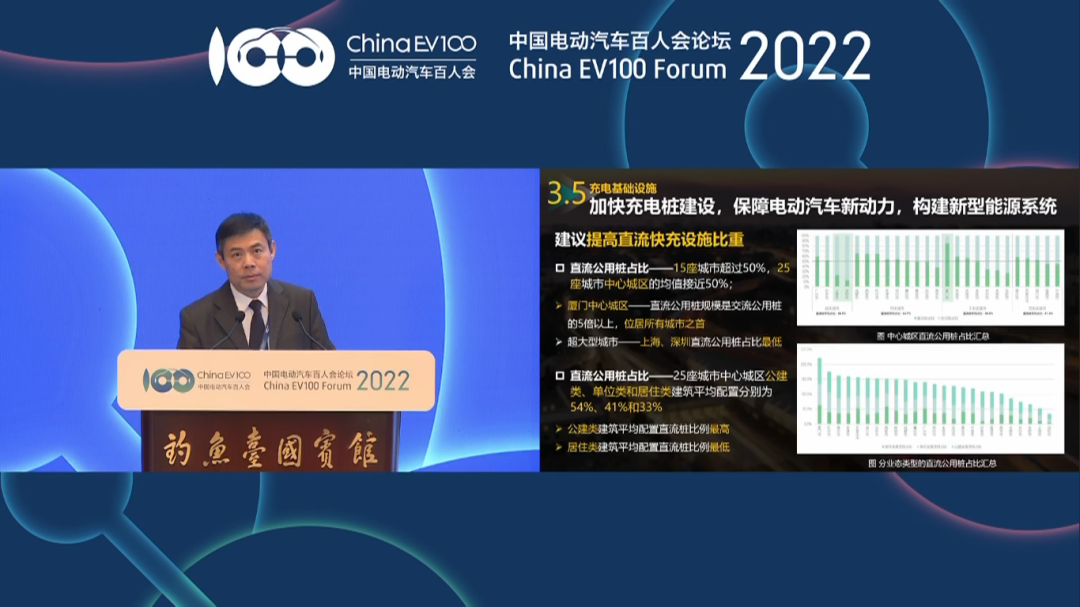
As EVs have developed today, charging piles, as supporting facilities for EVs, have achieved good coverage in central cities. For example, there is a Xiaoju charging pile downstairs in our company, and some models can reach a charging power of around 80kW, which provides a great charging experience.
However, China is a vast country. There may be no charging piles or only slow charging piles in places further away from us. Fortunately, planning experts have already noticed this problem. In the foreseeable future, there will be more and more fast charging piles around us, and the user experience of EVs will also be better.
Digital Information Infrastructure> “The coordinated development of both wisdom and intelligence is actually based on the big infrastructure of digital information technology, and the fusion of 5G and digital technology provides important support for emerging technology fusion.“
- Zhao Yue, Chairman of Unicom Smartinternet
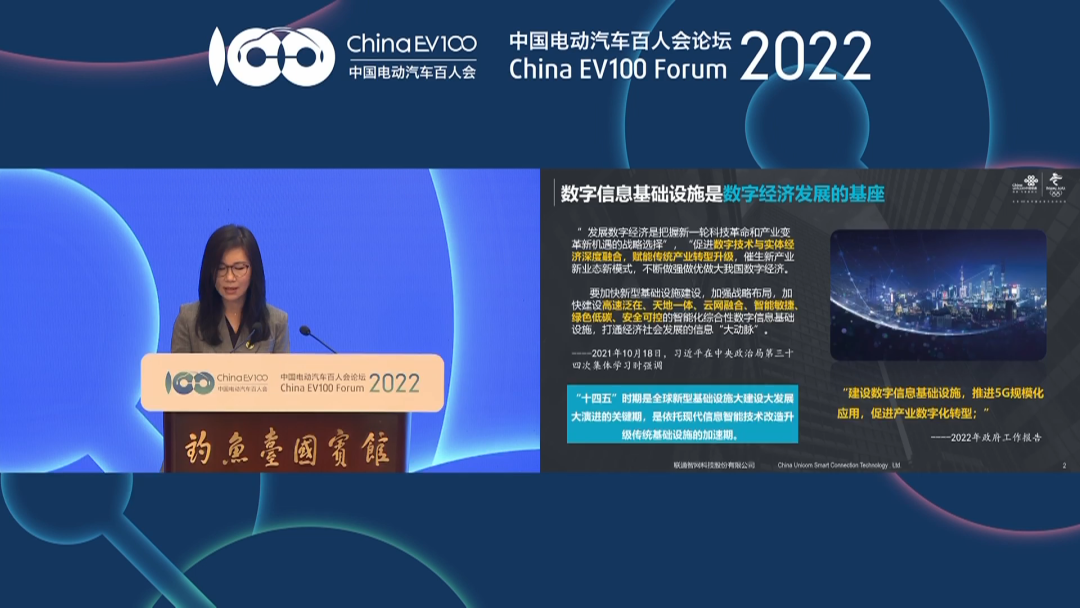
In the era of Internet of Vehicles, mobile communication networks are the most important infrastructure. In 2015, China Unicom established Unicom Smartinternet Technology Company for the connected car industry.
Unicom Smartinternet provides a Unicom chain service platform, which includes six application components: data sharing, rights certification, transaction, trusted identity, attestation and multi-party secure calculation, to deal with N scenarios such as smart cities, expressway management, insurance, logistics, vehicle traceability, and connected cars.
Currently, Unicom Smartinternet has cooperated with 82 car companies in the connected car industry, serving more than 40 million vehicles.
Smart Logistics
“In cooperation with the government of Hefei, Volkswagen will develop smart logistics.“
- Su Bohong, Volkswagen China
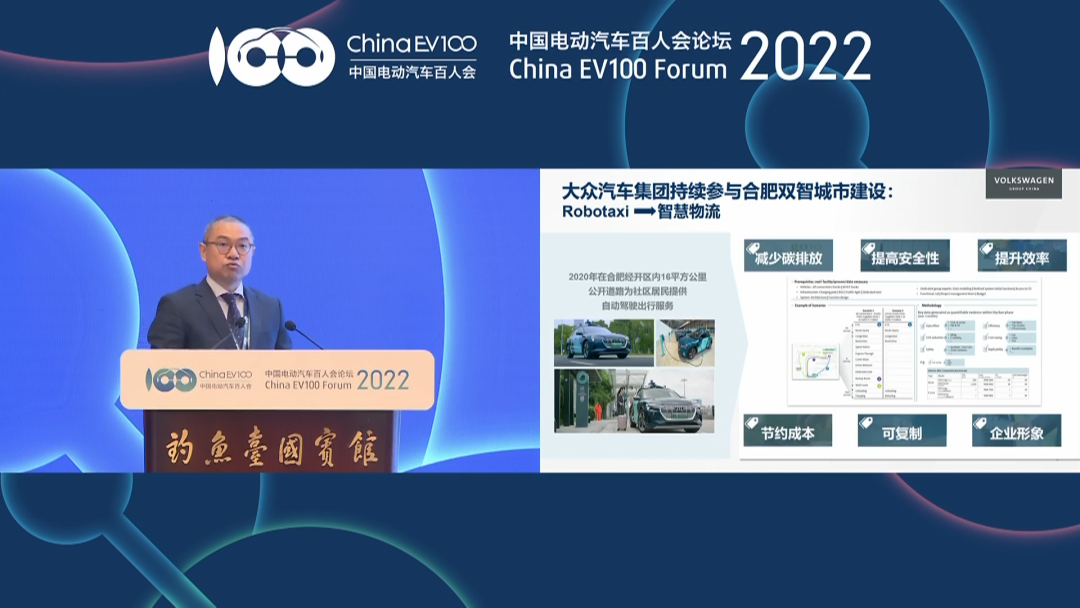
By 2050, Volkswagen aims to achieve carbon neutrality throughout the entire value chain. At the same time, Volkswagen has very high requirements for logistics efficiency. Therefore, in this forum, Volkswagen has chosen the topic of “Smart Logistics”.
In recent years, Hefei has performed very well, especially in the field of high-tech emerging industries, which is also the reason why Volkswagen chose Hefei.
In the future, based on a connected electric truck fleet, autonomous driving buses and a data platform, Volkswagen will verify smart logistics in real-world scenarios in Hefei, gradually upgrading technology and scale, and eventually promoting smart logistics to Volkswagen’s factories nationwide.
City Intelligent Entity
“Building a vehicle-city-network open platform, integrating into the city intelligent entity, and helping the innovation and upgrading of the coordinated development of wisdom and intelligence cities.“
- Guo Huipeng, Chief Engineer and Chief Scientist of Huawei Smart City
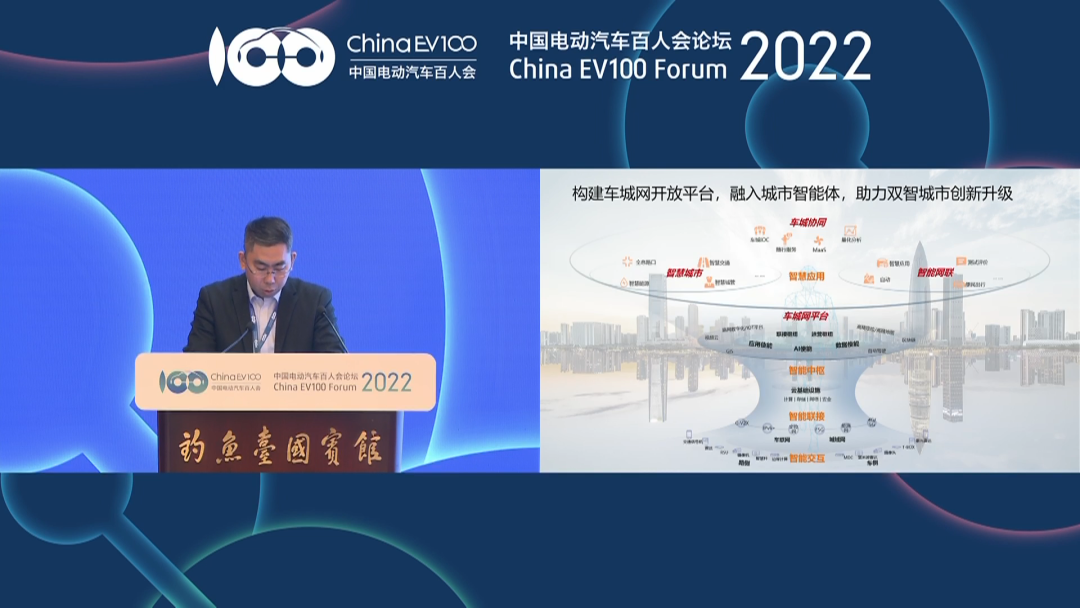
Huawei believes that a smart city is actually a city intelligent entity.
The bottom layer of the city intelligent entity is the intelligent interaction layer, which is the interface between the digital world and the physical world. All kinds of edge devices perceive changes in the physical world; upward is the intelligent connection layer, which includes various networks, wired and wireless communication networks, forming a bridge between the physical world and the intelligent world; then it is the intelligent central nervous system, including cloud computing infrastructure, providing basic capabilities for applications; finally, it is industry smart applications, including digital government, digital economy, and digital society. There will be innovative scenarios for N applications.
Autonomous Driving# “Intelligent Networking Improves Autonomous Driving Safety”
- Shang Guobin, Vice President of Baidu and General Manager of Intelligent Transportation Business Unit
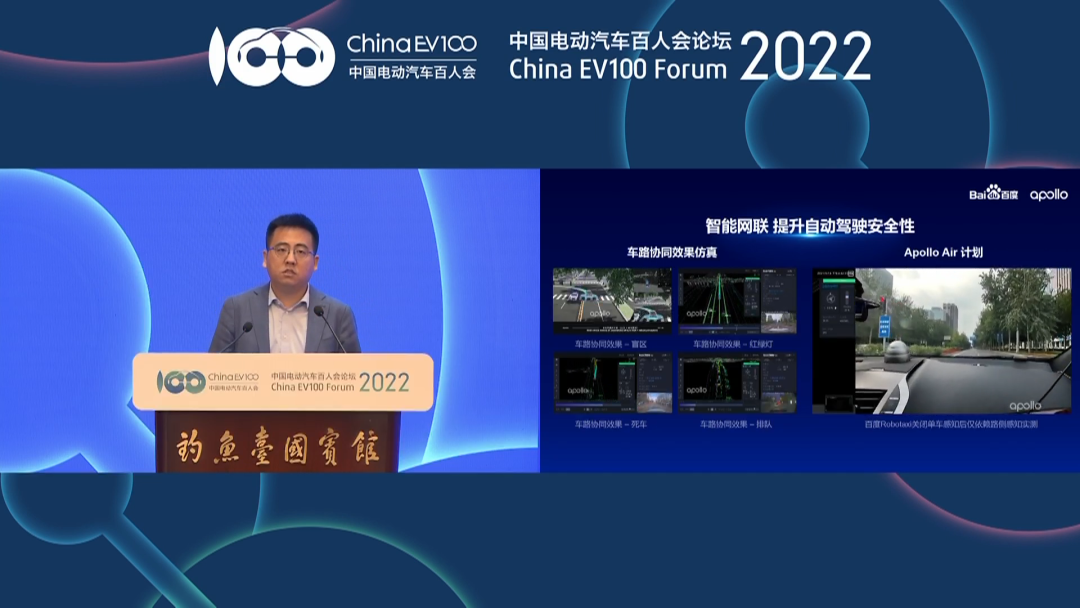
“Safety” will always be the top requirement for autonomous driving at any level. For autonomous driving, the most challenging aspect is actually the “intersections game”. In order to achieve better safety, Baidu participated in the roadside infrastructure renovation project at 305 intersections in Yizhuang. As a result of these efforts, even with all the perception devices on Baidu Apollo unmanned test vehicles blocked, the vehicle was still able to safely complete a left turn at the intersection with only the assistance of roadside infrastructure.
Networking Public Transit (3:27:10)
“Intelligent Networking Assisting Urban Public Transit”
- Ma Wei, CEO of Xidi IMa
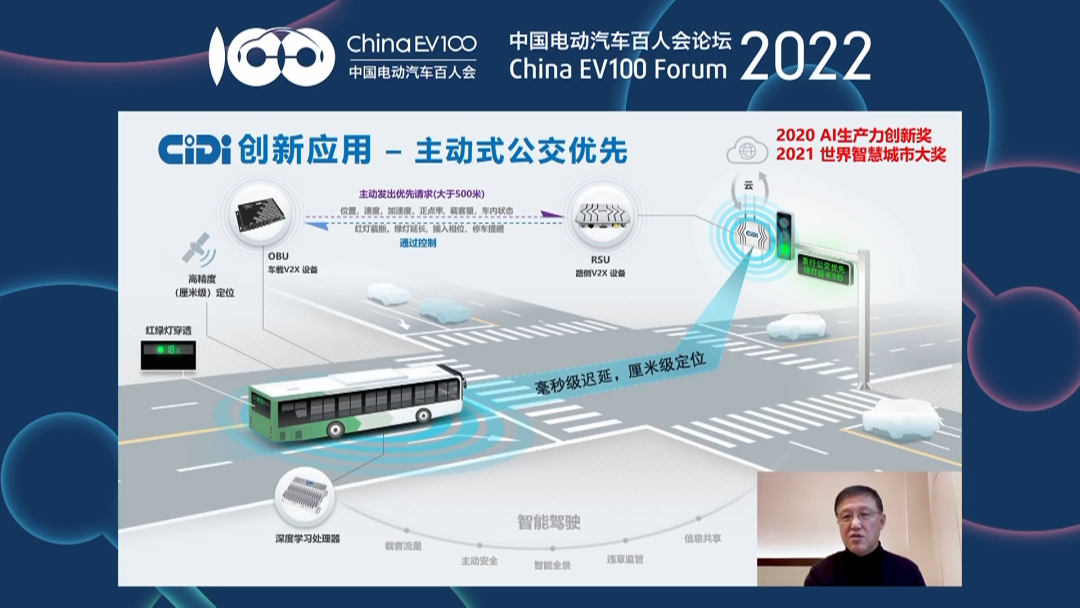
In today’s China, there are more and more ways of public transportation. However, in terms of passenger volume alone, buses carry about 200 million passengers a day, subways carry about 60 million passengers, and ride-sharing cars carry about 130 million passengers; buses still carry the most passengers. “Improving the traffic flow of buses can greatly improve the efficiency of current public transportation.” By setting communication boxes at intersections and installing OBU devices on buses, Xidi IMa can use the C-V2X national standard to determine priority based on the number of passengers on the bus, giving priority to buses with more passengers, thereby improving the efficiency of bus traffic. Xidi IMa has already renovated more than 70 routes and over 2,000 vehicles in Changsha.
New Trends in New Energy Vehicles
“Three new trends in the new energy vehicle market: Maintaining a high growth trend, continuous penetration, and high-quality development.”
- Wan Gang, Vice Chairman of the National Committee of the Chinese People’s Political Consultative Conference and Chairman of the China Association for Science and Technology
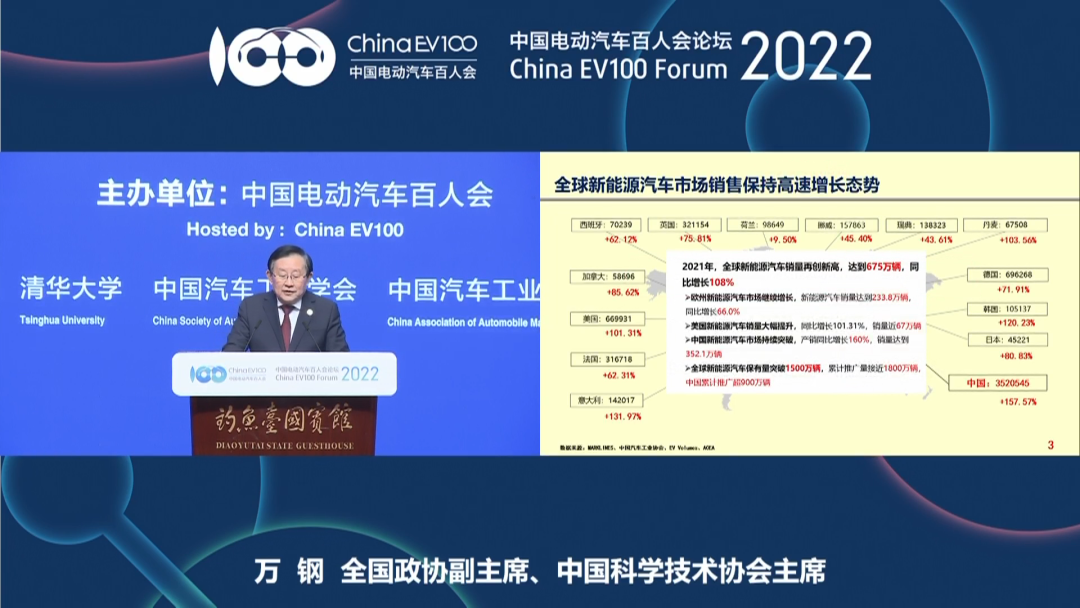
In 2021, China’s new energy vehicle market continued to grow rapidly, with sales up more than 160% year-on-year, reaching 3.52 million vehicles sold, representing more than half of the global new energy vehicle sales. We can all feel that there are more and more experience stores for new car companies in shopping malls, and compared to a few years ago, all new products from various companies have greatly improved in terms of quality, driving quality, and range, so there are fewer and fewer die-hard fans of fuel-powered cars, and people’s acceptance of electric vehicles is also increasing.# The Future of the Automotive Market Belongs to Electric Cars
The Second Half of the Automotive Industry (1:21:40)
“The Chinese automotive industry will win or lose in the intelligent networked second half.”
—— Deputy Director of the Economic Committee of the National Committee of the Chinese People’s Political Consultative Conference, Miao Wei
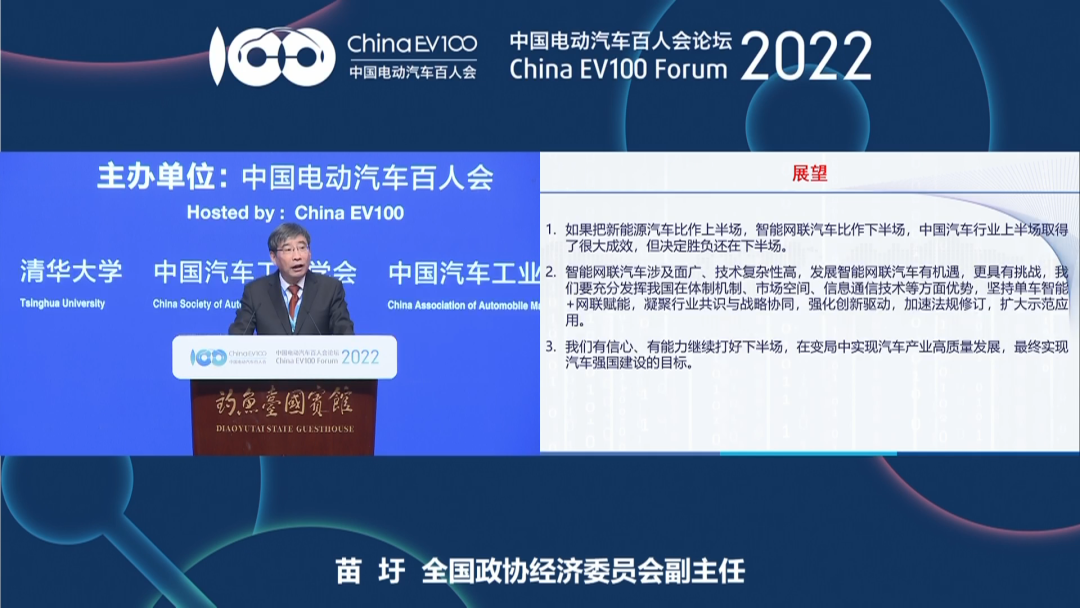
As a former Minister of the Ministry of Industry and Information Technology, Miao Wei has his own views on the automotive industry. He believes that the Chinese auto industry has achieved great success in the new energy vehicle battle, but the win or lose still lies in the field of intelligent networked cars. Currently, 22.2% of passenger cars are equipped with L2 or lower level automatic driving functions, and Miao Wei strongly agrees with Li Xiang’s proposal to make AEB a necessary component for vehicles. In terms of the connected car network, Miao Wei proposed that we should develop near-range broadband wireless communication technology as soon as possible to meet the needs of edge computing, roadside units, and vehicle communication requirements. At the same time, we should establish national standards for road intelligence grading.
Rational Development (1:34:30)
“No new investment in capacity will be made before the existing new energy vehicle base reaches a reasonable size.“
—— Deputy Director of the National Development and Reform Commission, Lin Nianxiu
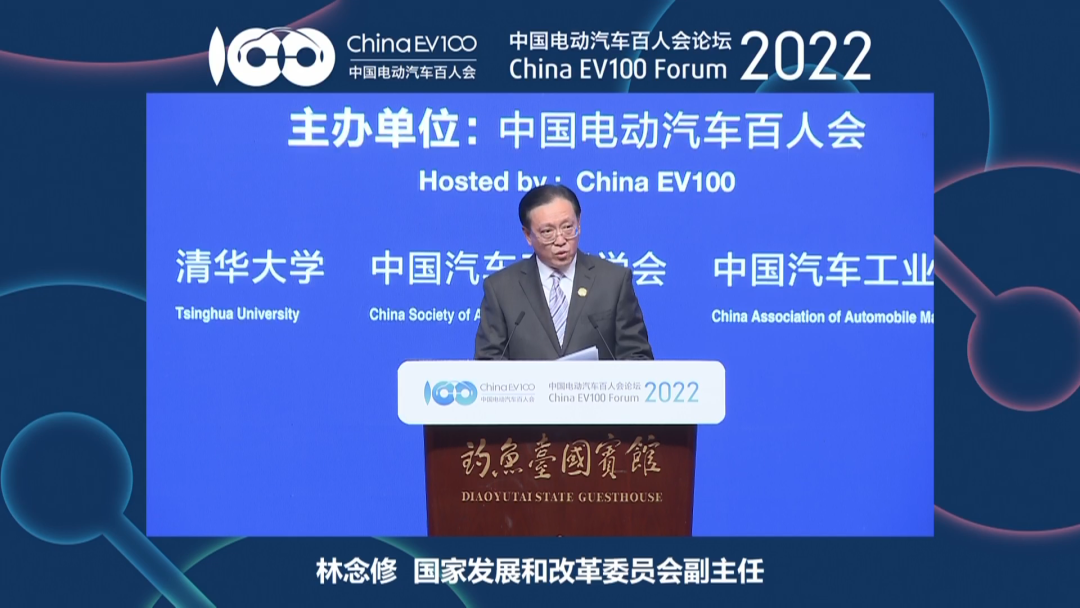
In 2021, China’s automobile production and sales volume exceeded 26 million units, ending the downward trend of the previous three years. However, while developing the market, we should also respect objective market laws. Lin Nianxiu proposed that we should coordinate the layout, optimize the industrial infrastructure, and realize standardization of the industry. Firstly, we should focus on the Yangtze River Delta, Pearl River Delta, Beijing-Tianjin-Hebei, Chengdu-Chongqing and other regions, with the principle of centralized clustering of the main body to build internationally competitive industrial clusters. Secondly, we should encourage and guide key areas to develop industrial development plans. Before the current base reaches a reasonable scale, automakers will not add new capacity. Thirdly, we should strictly implement automobile industry investment management regulations. Fourthly, we should standardize the merger and reorganization of automakers to promote the exit of backward enterprises and non-effective capacity.
Combating Speculation
“We will moderately accelerate the progress of domestic resource development, firmly combat illegal competition such as hoarding and speculation, guide upstream and downstream companies in the industrial chain to strengthen cooperation, win-win development, and promote the return of key raw material prices to rationality.“
—— Deputy Minister of Industry and Information Technology, Xin Guobin
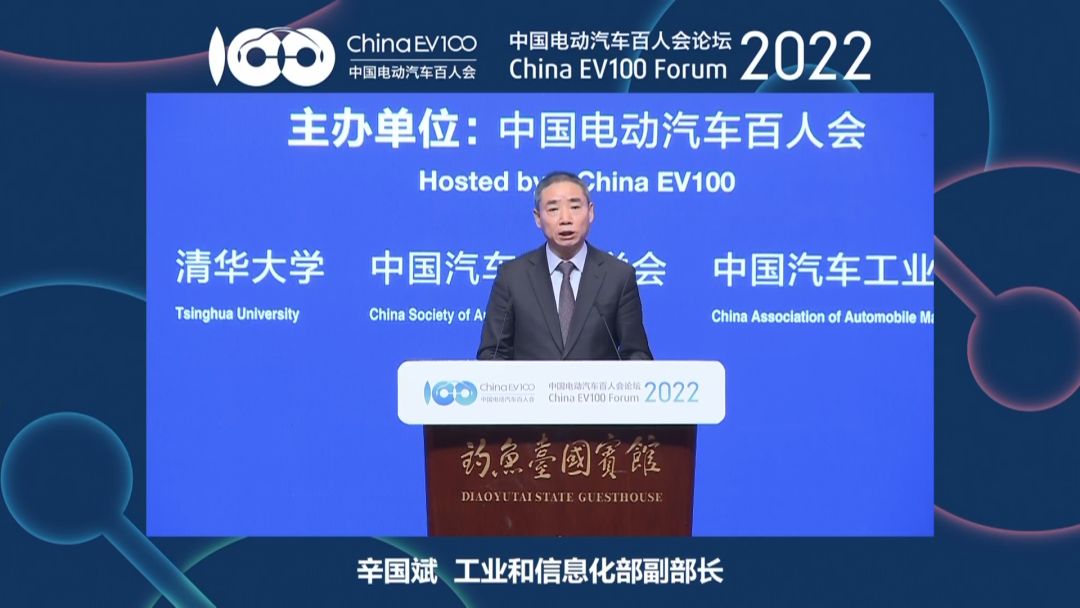 Translate the following Markdown Chinese text into English Markdown text in a professional manner, retaining HTML tags inside Markdown, and outputting only the correction and improvement parts without explanation.
Translate the following Markdown Chinese text into English Markdown text in a professional manner, retaining HTML tags inside Markdown, and outputting only the correction and improvement parts without explanation.
Recently, the soaring prices of battery raw materials have caused a wave of price hikes in new energy vehicles, which has also attracted the attention of relevant state departments. Well, the socialist iron fist never disappoints us. I hope that battery prices can quickly return to normal, so that everyone can afford cheaper electric cars.
Transition of Old and New
“Starting from 2022, traditional fuel vehicles will reach their peak and will continue to decline thereafter.”
—Ouyang Minggao, academician of the Chinese Academy of Sciences
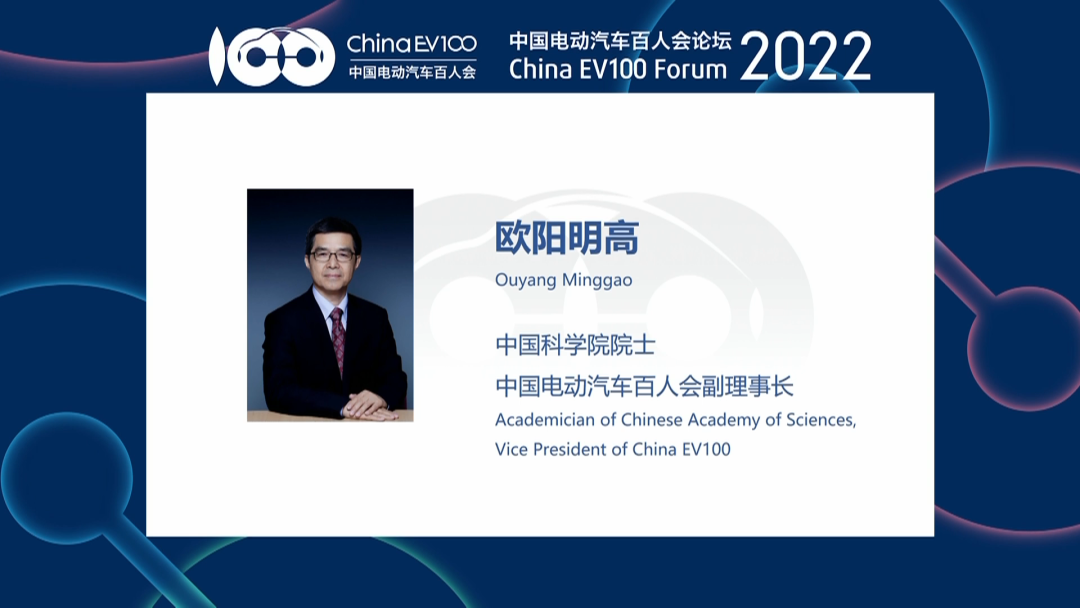
This is a conclusion from a respected scholar in academia. In terms of specific experience, the driving experience of pure electric cars is indeed more enjoyable than that of fuel cars, especially on urban roads. At the same time, various intelligent driving functions attached to electric cars can also greatly reduce our driving fatigue and ensure safety. Electric cars are awesome!
Rapid Growth
“The overall trend of new energy vehicles from 2021 to 2030 is rapid growth, and it is expected that the carbon emissions of passenger cars will reach their peak in 2025.”
—Ouyang Minggao, academician of the Chinese Academy of Sciences
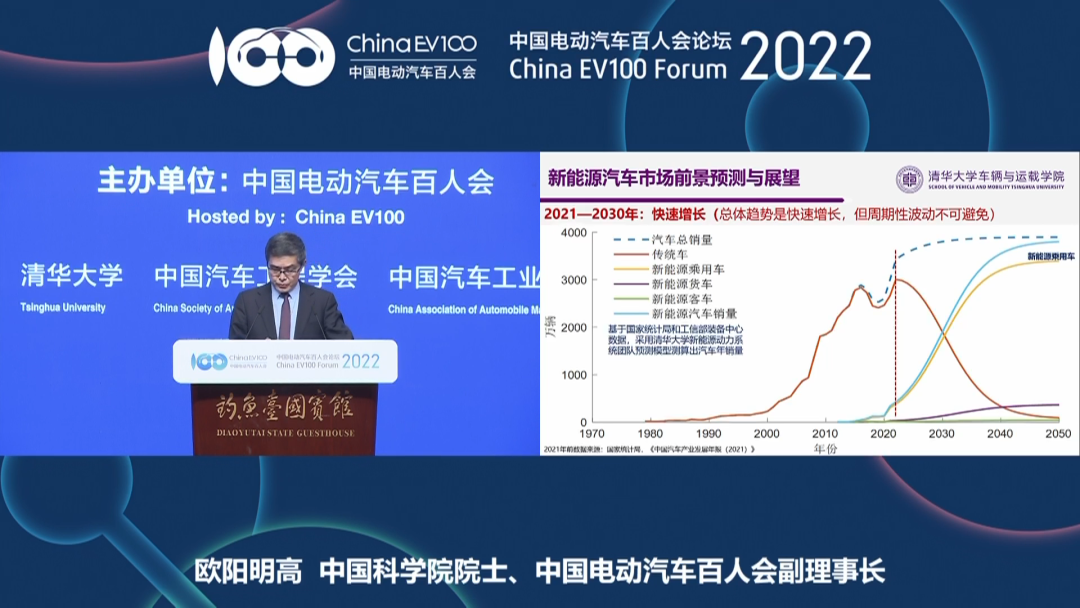
With the arrival of the peak of fuel cars, as time passes by, fuel cars will become less and less, and electric vehicles will become more and more, the overall emissions of passenger cars will naturally tend towards a peak, and then decrease year by year.
Lithium Price Forecast
“It is expected that the balance between supply and demand of lithium resources may return to normal 2-3 years later.”
—Ouyang Minggao, academician of the Chinese Academy of Sciences
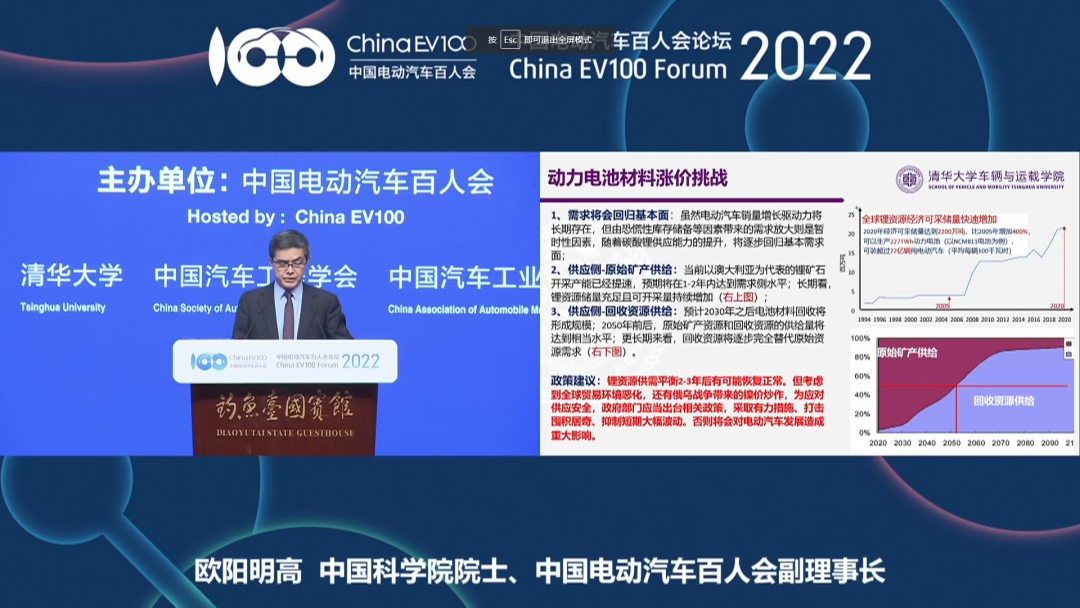
In the opinion of Ouyang Minggao, the rise in the price of lithium carbonate is mainly due to the sharp increase in demand for lithium driven by the surge in sales of new energy vehicles in 2021.
Although the demand is rising rapidly, the release of production capacity of lithium carbonate is not immediate. The production capacity release cycle for mineral production teams is 3-5 years, and the cycle for lithium-ion batteries produced from brine is 6-8 years. If the production capacity cannot keep up with the demand, coupled with the impact of the pandemic, the price of lithium carbonate will continue to rise.
However, in the long run, after the production capacity release of this round of lithium carbonate production increase, the price of lithium carbonate will eventually stabilize. It is just that this may take 2-3 years, which means that the prices of electric vehicles may not be too friendly in the next two years.
New Challenges in Car Manufacturing
“The skateboard chassis is a new challenge for the new forces of car manufacturing to traditional car manufacturing.”
—Ouyang Minggao, academician of the Chinese Academy of Sciences
The skateboard chassis is a transformative technology roadmap that consists of a non-load-bearing body structure, line-driven steering and braking systems, CTC structural batteries, and integrated drive systems. Ouyang Minggao stated frankly that in the field of electric vehicles, our biggest competitor is the United States, including a series of innovative brands such as Tesla, Rivian, and Canoo.
At the same time, Ouyang Minggao predicts that the ultimate blow to traditional chassis from the skateboard chassis may come from the hub motor.
Development and Integration
“In the next 3-5 years, it is expected that 80% of Chinese brand cars will shut down and transfer.”
—Zhu Huarong, Chairman of Changan Automobile
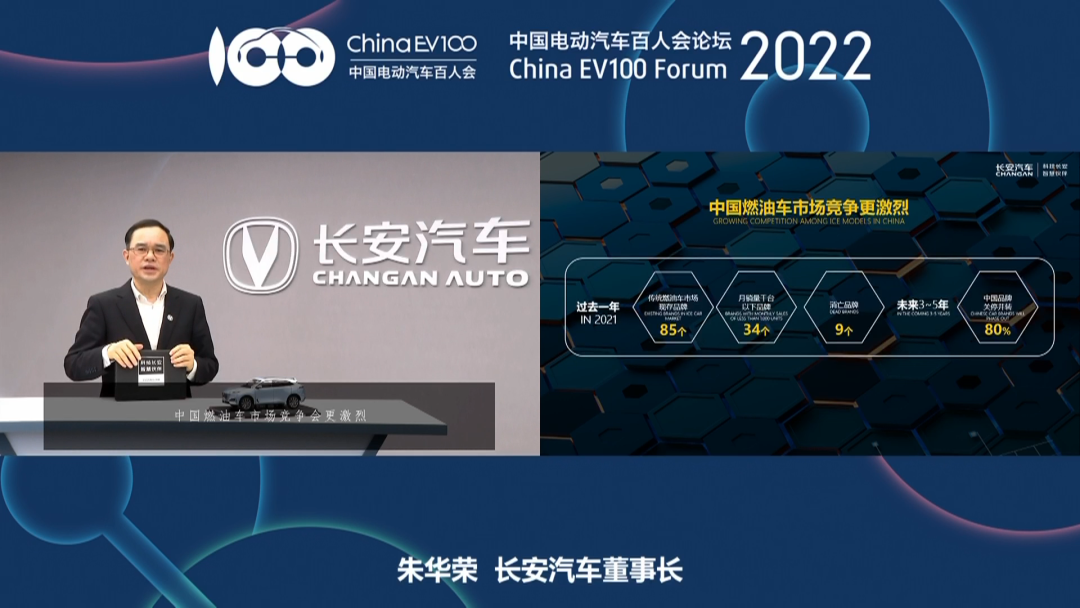
As the new energy vehicle products become stronger and stronger, traditional car companies with weak technical capabilities are finding it harder and harder to survive.
In the past year, there were 85 existing brands in the traditional fuel vehicle market, with 34 brands selling less than a thousand vehicles per month. Zhu Huarong believes that in the next 3-5 years, 80% of Chinese brands will shut down and transfer.
Remember, this is the judgment of the chairman of the traditional fuel vehicle industry, Changan Automobile.
Continuous Penetration
“It is expected that the penetration rate of new energy vehicles will reach 28% in March, with 70% being driven by the market and 30% by policies. It is expected that the penetration rate of new energy will reach 35% at the end of this year.”
—Wang Chuanfu, BYD
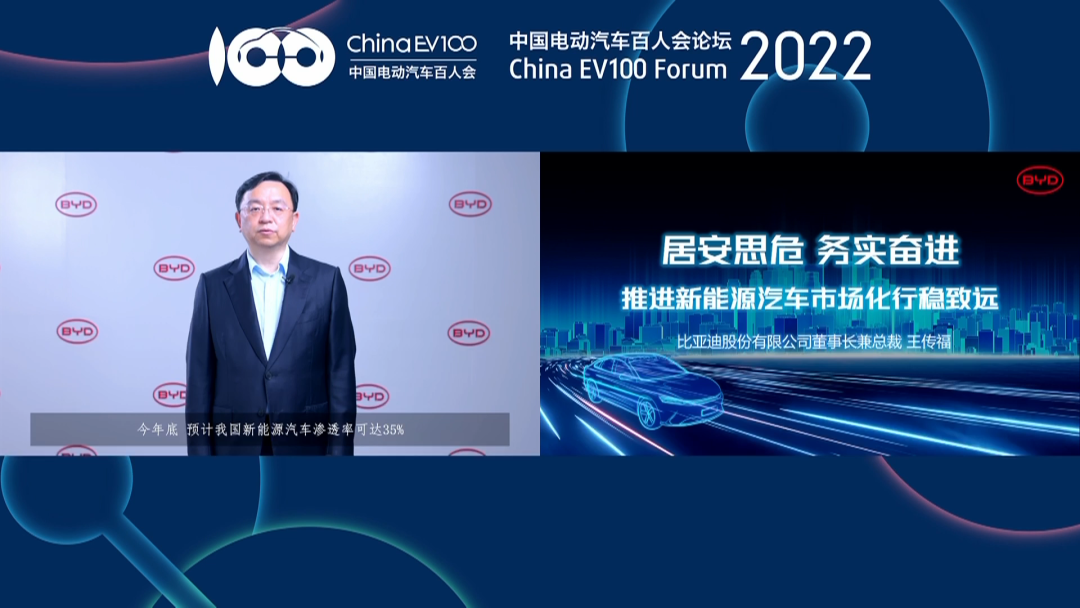
BYD is the biggest winner in the recent domestic new energy vehicle market. With the excellent power and economy of the DM-i, BYD has established a very good brand image in the minds of consumers, and has subsequently achieved excellent sales. This kind of positive cycle triggered by technology should be the most commendable.
As electric cars continue to improve, the penetration rate is continuously increasing, which is not surprising.
Stick to Lithium Iron Phosphate
“It is suggested that lithium iron phosphate should be the key material, with a range of 500 km, energy density is no longer important, and safety should be emphasized. Lithium iron phosphate does not contain valuable metals, and materials will not be a bottleneck.”
—Wang Chuanfu, BYD
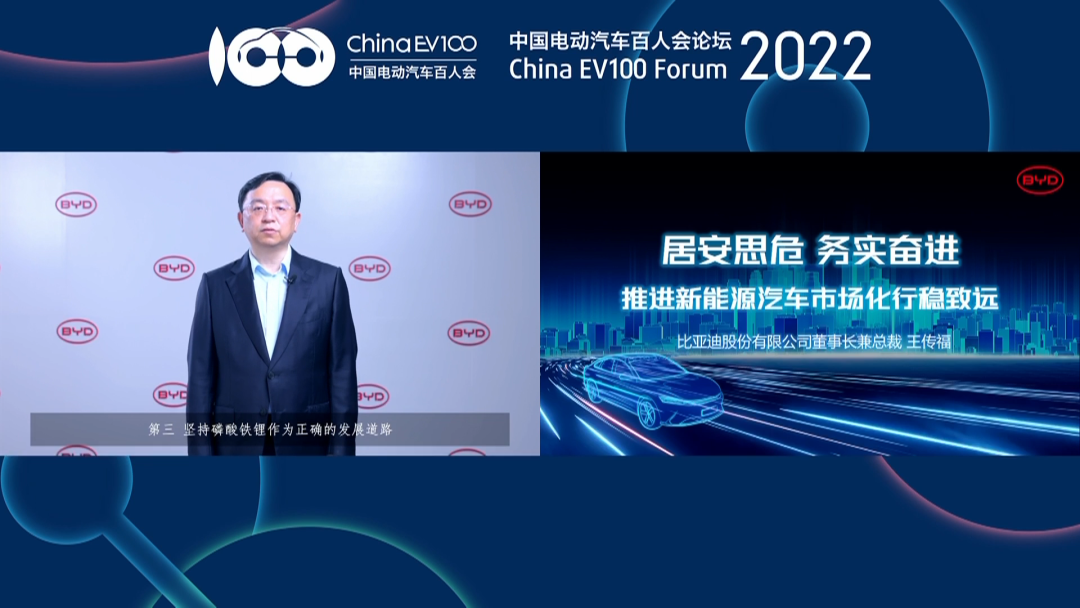 # Safety is important, but battery energy density is equally important, and I cannot agree less on this point. We certainly want electric vehicles that are both safe and have long range. As a greedy consumer, I still hope that new energy vehicle companies will continue to vigorously research and develop and bring us better products.
# Safety is important, but battery energy density is equally important, and I cannot agree less on this point. We certainly want electric vehicles that are both safe and have long range. As a greedy consumer, I still hope that new energy vehicle companies will continue to vigorously research and develop and bring us better products.
Coexistence of Long-term Development
“Looking forward to 2030, centralized electric power energy and distributed energy liquid energy will coexist in long-term development.”
–Li Xiang, IDEAL Automotive
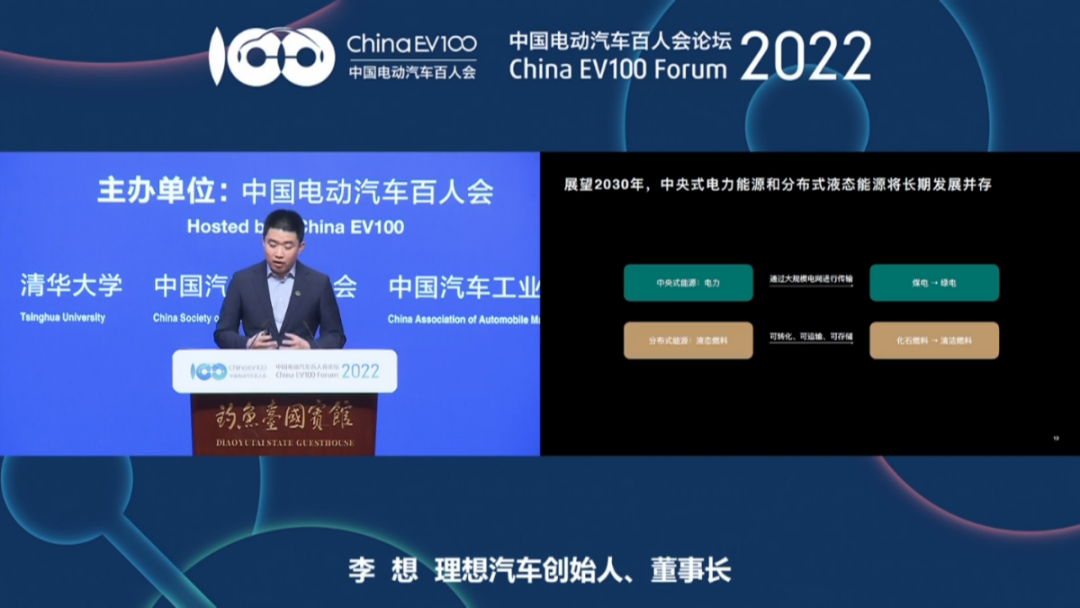
In the future, for the sake of national energy security, Li Xiang believes that centralized energy, namely electric power, and distributed energy, namely modal fuels, will coexist in long-term development. In order to achieve dual carbon goals, electric power will shift from coal-fired power to green power, such as wind power and solar energy, while liquid fuel will shift from fossil fuel to clean fuel.
Gradual Promotion
“According to policies, NGP (Next Generation Platform) will be gradually promoted in major cities this year, including Shenzhen, Guangzhou, Hangzhou, Shanghai and other cities.”
–He XPeng, Xpeng Motors

To be honest, Xpeng Motors’ intelligent driving system is among the absolute top tier in China. VPA-L cross-floor parking memory parking is very easy to use. Interested small partners can click here to review our previous program on Xpeng VPA-L.
In the gradual promotion of NGP, more and more users will be able to enjoy the convenience brought by technological progress. This is the most desirable scene for us as an automotive media.
This article is a translation by ChatGPT of a Chinese report from 42HOW. If you have any questions about it, please email bd@42how.com.
